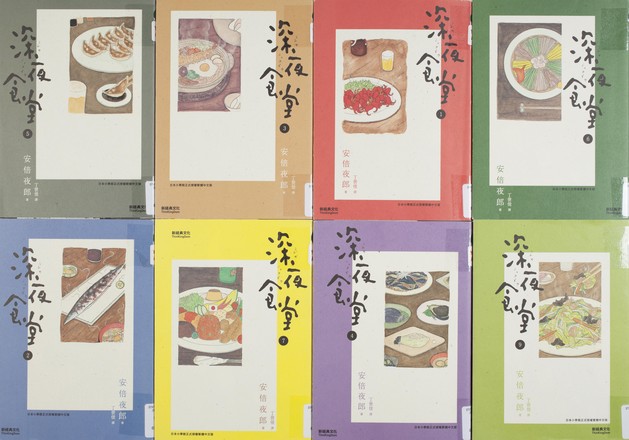
Shinya Shokudō (深夜食堂) (The night café), 2011
CHI0124–01832 Tai bei Shi: Xin jing diantu wen chuan bo you xian gong si, 2011 Shinya Shokudō was originally published by Shogakukan Inc., Japan in 2007–2012

CHI0124–01832 Tai bei Shi: Xin jing diantu wen chuan bo you xian gong si, 2011 Shinya Shokudō was originally published by Shogakukan Inc., Japan in 2007–2012
Picture recitation first appeared about the mid-eighth century in Japan with the arrival of Buddhist itinerant storytellers from Central Asia. Picture reciters carried scrolls (emaki) with drawings depicting both the rewards in the Buddhist cosmology for those who aspired to live a life of virtue and the punishments for those who rejected the Buddhist path of moderation. The emaki scrolls were brought to the emperor’s court, where they were adapted to create a distinctly Japanese form of narrative art that emphasized expressive clothing, gestures, and nuanced awareness of social customs.
Soon after Japan was ‘opened up’ to the rest of the
world following Commodore Matthew Perry’s arrival in Japan in 1856, an
eccentric correspondent for the London
Illustrated News, Charles Wirgman, started publishing his cartoon genre Japan Punch for expatriates living in
Japan from 1864. Wirgman effectively established the cartoon genre in Japan.
Long after Japan Punch ceased
publication, cartoons were called ponchi-e
or ‘punch picture’.
Each of the chapters in this series is named after food. The table of contents is titled ‘Menu’.
In the open graphic novel the chapters are named as follows (from Chapter 1 to Chapter 14): Red sausages, Left-over curry, Rice cuisine, Soy sauce and other sauces, Stewed cow bells with eggs, Nattos (Japanese beans), Barbequed seaweed, Snow fish eggs, Pork ribs, Neapolitan spaghetti, Potato salad, Pickles, Watermelon, Noodles.
This is a Chinese translation of a Japanese manga series.
Set in a small restaurant in the corner of a shopping district. The unusual eatery is only open after midnight, and its standard menu consists of just a single choice. However, the customers still come for the amusing chatter and the proprietor's willingness to cook any dish that they request. This drama depicts the lives of the restaurant's patrons, including a yakuza, an unsuccessful actor, a group of office ladies, a newspaper delivery boy, and a stripper.
Shinya Shokudō (深夜食堂) is a Japanese manga series by Yarō
Abe. It won the 55th Shogakukan Manga Award for general manga and it was
nominated for the 2nd Manga Taishō. It was adapted into a 10-episode
live-action television drama in 2009, followed by second season in 2011.
Japan adopted Chinese print technology in the Nara
period (710–794). Unlike China, Japan soon developed a vibrant popular print
culture. Combining this print culture with a rich tradition in storytelling and
an indigenous brand of caricature (toba-e),
Japan would lead the way to produce some of the most innovative graphic
narratives that catered to a highly literate audience.